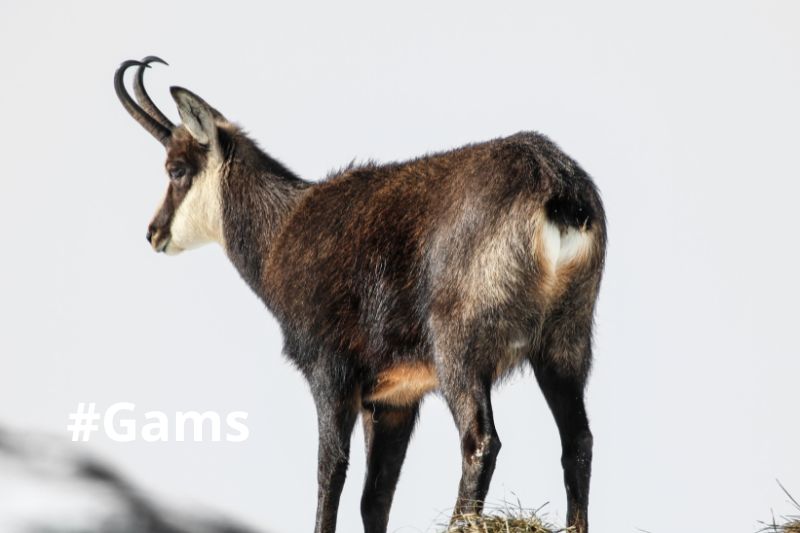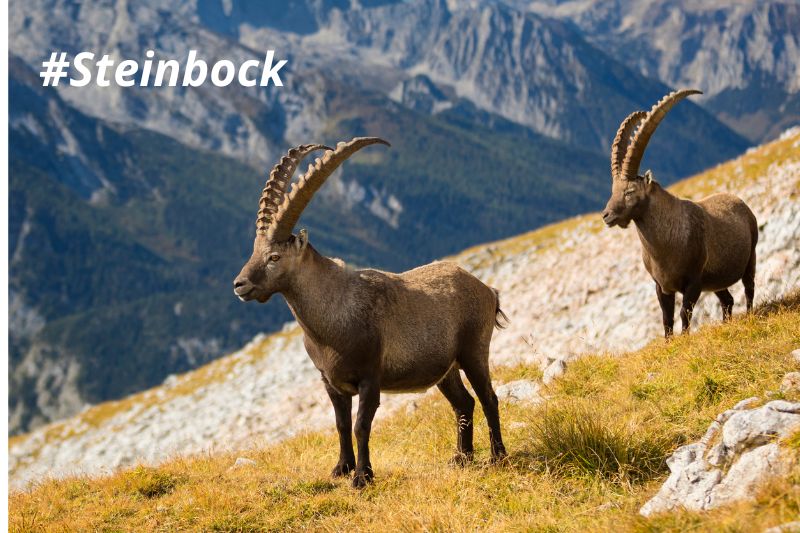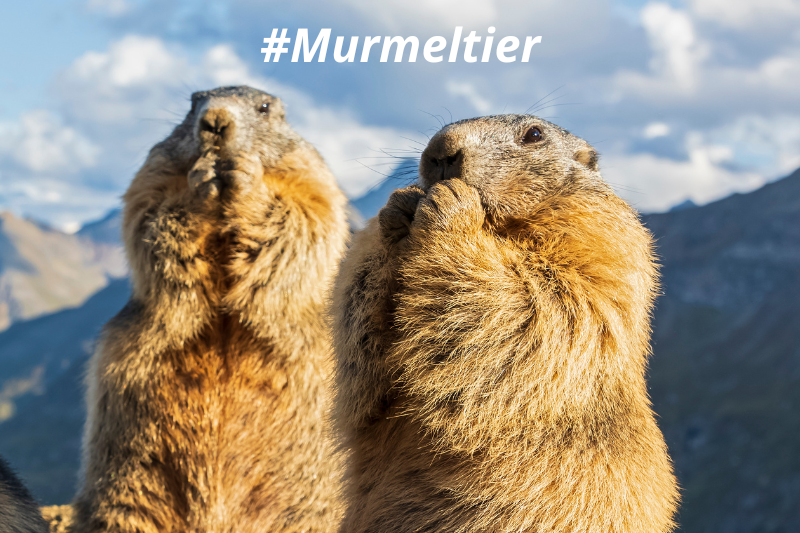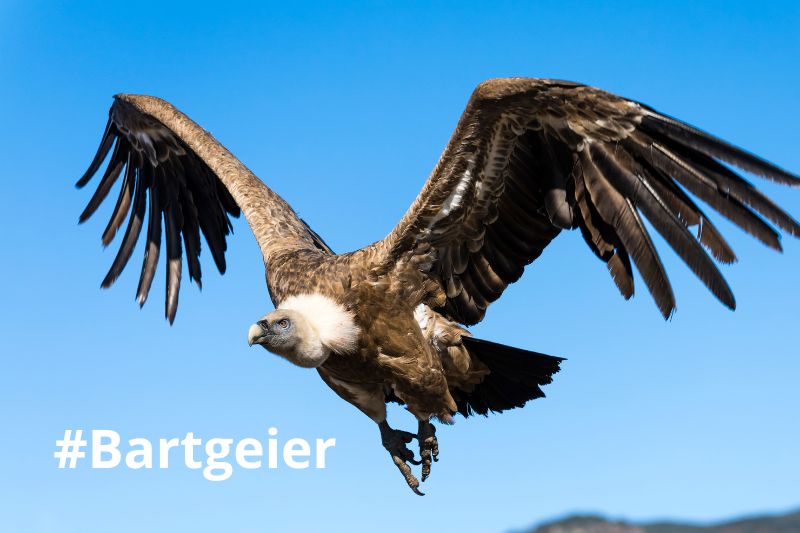The Big Five of the mountains
The Mountain Marvels
The “Big Five of the mountains”, consisting of chamois, ibex, golden eagle, marmot and bearded vulture, form a unique and fascinating group of animals native to the alpine regions of Europe. Similar to the “Big Five” in African wildlife, these animals have a special significance in mountain ecosystems and attract nature lovers, researchers and photographers alike. Each of these animals embodies in its own way the adaptability, strength and beauty necessary to survive in the challenging mountain habitats. In this article, we dive into the world of the Big Five of mountains to discover their unique characteristics, behaviors, and importance to the ecosystems in which they exist. I can tell you one thing in advance: all five are represented on the Arlberg.
#1 The chamois
The chamois, also known as the Alpine chamois, is a graceful and fascinating species of mountain goat native to the majestic Alpine regions of Europe. With its distinctive appearance and impressive adaptations, the chamois has attracted the attention of nature lovers and researchers alike.
Their thick fur, which provides protection during the cold mountain nights, and their distinctive horns make the chamois a remarkable sight.
But their most impressive feature is undoubtedly their ability to effortlessly traverse steep, rocky slopes. This is thanks to its specially shaped hooves, which allow it to proceed safely even on the most impassable paths.
The chamois feeds mainly on grasses, herbs and other plants found in alpine pastures. During the warmer months, it grazes at higher elevations, and when winter approaches, it retreats to lower elevations to escape adverse conditions.
Unfortunately, the chamois is endangered in some regions due to human activities, habitat loss and disturbance. Fortunately, however, protective measures are being taken to safeguard their future. The chamois represents the wildness and beauty of the mountains and emphasizes the importance of protecting these unique habitats so that these majestic animals can be admired for generations to come.

#2 The Capricorn
The ibex, an impressive and majestic mountain dweller, has found its habitat in the imposing alpine regions of Europe. Its imposing appearance and remarkable adaptations have made it a symbol of the wildness and beauty of the mountains, inspiring admiration and respect in equal measure.
With a massive build, thick fur and characteristic backward curved horns, the ibex is perfectly adapted to the harsh life in the mountains. These horns are not only impressive to look at, but also serve as effective tools for defense against predators and in fights over rank during the mating season.
An outstanding ability of the Capricorn is its exceptional climbing ability.
Thanks to its specially shaped hooves, which have a non-slip surface and hard edges, it can move easily on steep and rocky terrain. This adaptation allows it to move in seemingly inaccessible areas to find food and escape from threats.
The diet of the ibex consists mainly of grasses, herbs and other plants that thrive in mountainous regions. During the warm months, it seeks out higher elevation pastures to graze and retreats to lower elevations during the cold winter months to escape extreme weather conditions.
Despite its adaptability and impressive survival strategies, the ibex is endangered in some areas due to habitat loss and human impacts. Conservation measures and efforts to preserve its habitat are essential to ensure the future of these impressive mountain dwellers. The ibex remains a living symbol of the untouched wildness of the mountains and reminds us of the importance of protecting these unique ecosystems for future generations.

#3 The golden eagle
The golden eagle, a majestic bird of prey, sits enthroned high up in the alpine skies of Europe and embodies the freedom and elegance of the mountain world. Its imposing appearance and impressive flying skills make it a symbol of wilderness and survival in the demanding mountain regions.
With a wingspan of up to 2-3 meters, the golden eagle is one of the largest birds of prey in the world.
Its distinctive plumage, consisting of dark brown to black feathers and a light-colored plumage on the head, makes it easily recognizable. Its powerful claws and sharp beak are perfect adaptations to its role as a hunter.
The golden eagle is known for its impressive flying skills, which enable it to soar high up in the air and then look for prey in a breathtaking dive. It feeds mainly on small mammals such as marmots, rabbits and birds. Its excellent eyesight enables it to detect even tiny movements on the ground from a great distance.
The breeding season of the golden eagle extends from spring to summer. Nests are often built on rocky ledges or in tree canopies at higher elevations. Caring for the young requires perseverance and skill from both parents and fledglings.
Despite their adaptable nature, golden eagles are endangered in some regions due to habitat loss and disturbance. Conservation measures, particularly the protection of breeding sites and raising public awareness, are crucial to safeguarding their future. The majestic golden eagle remains a symbol of the pristine beauty of the mountains and emphasizes the importance of protecting these unique birds for future generations.
#4 The groundhog
The marmot, a charming and sociable rodent, is a familiar inhabitant of Europe’s alpine landscapes. Its endearing appearance and fascinating behavior have made it a symbol of the mountain world, attracting nature lovers and observers alike.
The marmot is characterized by its compact build, short legs and dense fur that protects it from the changing weather conditions in the mountains. Its characteristic coloration varies depending on the species and region, from dark brown to reddish gray. Its small, round ears and short, bushy tail tip are particularly striking.
These gregarious animals are known for their distinct social structure. They live in colonies, often consisting of several individuals, and share underground burrows that serve as shelter and protection from predators.
Marmots are excellent tunnel builders and can create complex cave systems with various chambers and tunnels.
Their behavior is equally remarkable. Marmots are diurnal and spend much of their time foraging near their burrows or on the lookout for potential threats. Their characteristic whistle, which they use as a warning call, has earned them the name “groundhog.” This call serves to warn the group of possible predators.
Unfortunately, marmots are endangered in some areas due to habitat loss and human disturbance. Conservation measures that include protecting their habitats and raising public awareness are necessary to ensure their survival. The lovable marmot remains a fascinating inhabitant of the mountains and reminds us of the importance of preserving the diversity and charm of alpine ecosystems.

#5 The bearded vulture
The bearded vulture, also known as the “lammergeier”, is an impressive yet enigmatic inhabitant of the alpine regions of Europe. With its distinctive features and unique behavior, it fascinates nature lovers and researchers alike and contributes to the mystical aura of the mountain world.
The bearded vulture is the largest bird of prey in Europe and is characterized by its striking appearance. His feather color varies from a deep brown to black, with his face and neck marked by a conspicuous white coat. It owes its name to the distinctive “beard” of feathers below its beak.
One of the most amazing features of the bearded vulture is its diet. Unlike most birds of prey, it feeds mainly on bones. It is known to smash bones of dead animals from high altitudes and eat them to get the valuable bone marrow. This unique behavior has earned him the reputation of a “cleaning agent” of the mountain world.
The bearded vulture plays an important ecological role by helping to limit the spread of disease through the removal of carcasses. Despite its important role, the bearded vulture was endangered and almost extinct for a long time. Fortunately, extensive conservation efforts, including breeding programs and reintroduction into the wild, have led to a recovery of its population.
The return of the bearded vulture is a sign of conservation success and a symbol of nature’s resilience. It remains a fascinating example of the unique biodiversity of mountain regions and reminds us of the importance of considering the needs and protection of these special animals and their habitats to ensure their future.
The Big Five on the Arlberg
The Arlberg, a magnificent alpine region, is home to fascinating animals such as chamois, ibex, golden eagle, marmot and bearded vulture. These inhabitants, adapted to the harsh environment, play a significant role in the ecosystem of this region.
The chamois and the imposing ibex share the steep cliffs of the Arlberg. Their climbing abilities and distinctive features reflect strength and adaptability to mountain life.
The majestic golden eagle sits enthroned high up in the Alpine skies. His impressive flying skills and sharp vision symbolize the freedom and wilderness of the mountains.
The sociable marmots can be found in the meadows and on the slopes of the Arlberg. Their characteristic whistling fills the mountain air and adds a special charm to the surroundings.
The rare bearded vulture also roams the Arlberg. With its unusual bone-eating habit, it plays a unique role in the ecosystem and shows remarkable adaptations to the mountain environment.
These animals are not only part of the ecosystem, but also key players in preserving the beauty of the mountains. Their presence reminds us of the importance of protecting these unique habitats to ensure their future and to pass on the admiration for their uniqueness to future generations.
Winter or summer, the big five are always stunning. Only the marmot hides in their burrows during the winter months to hibernate. No matter what time of year – these animals are just waiting to be discovered by you.
Your accommodation to search the Big Five at Arlberg
The Hotel Die Arlbergerin is the perfect starting point to explore the fascinating wildlife of the “Big Five at the Arlberg” – chamois, ibex, golden eagle, marmot and bearded vulture. The hotel offers guided hikes and excursions to experience these impressive animals up close amidst the breathtaking Alpine scenery. Comfortable accommodation in stylish rooms and suites with panoramic views allows for a relaxing rest after an exciting day in nature. The hotel’s own spa area offers relaxation and regeneration, while the regional cuisine promises culinary delights. From the majestic flights of the golden eagle to the characteristic whistling of the marmots, Hotel Die Arlbergerin offers an unforgettable nature experience. You can experience the unique wildlife up close while enjoying the modern comforts and warm service of the hotel. The Arlberger combines nature adventure and relaxation to an unforgettable stay, which conveys the beauty of the Alps and the fascination of the wildlife of the Arlberg in an impressive way. So book your next vacation at Hotel die Arlbergerin now – the perfect place to discover the Big Five. No matter if winter or summer.
You still have questions?
Just give us a call or send us an e-mail. We will be happy to advise you in our Hotel St. Anton.
We are looking forward to meeting you!
Kind regards from St. Anton am Arlberg,
The siblings
Barbara & Mathias Kometer
Request & Booking
Booking hotline: +43 54 46 22 43
E-mail: hotel@diearlbergerin.com
Photo:
© Patrick Bätz
© St. Anton am Arlberg
© GettyImages.com









